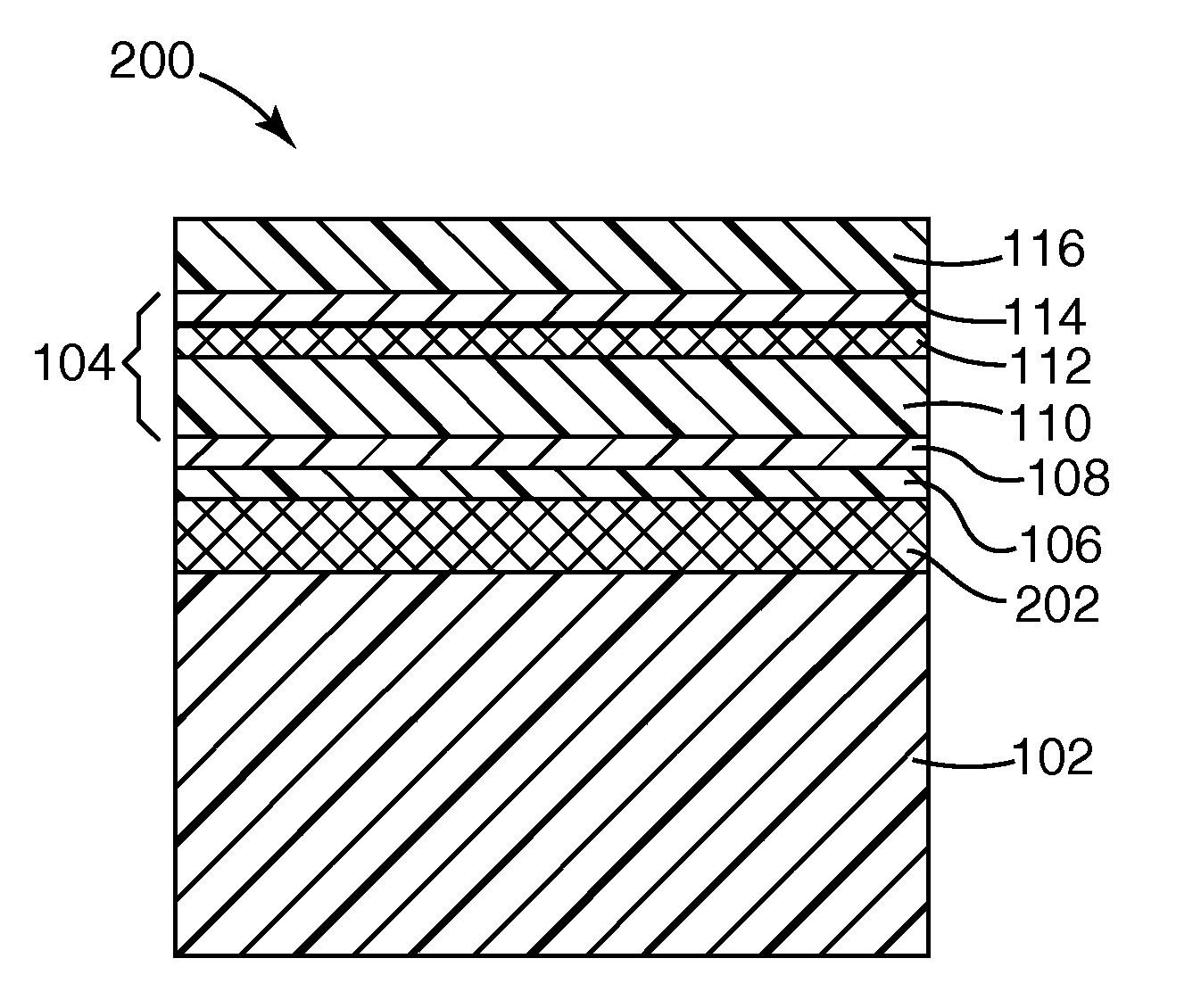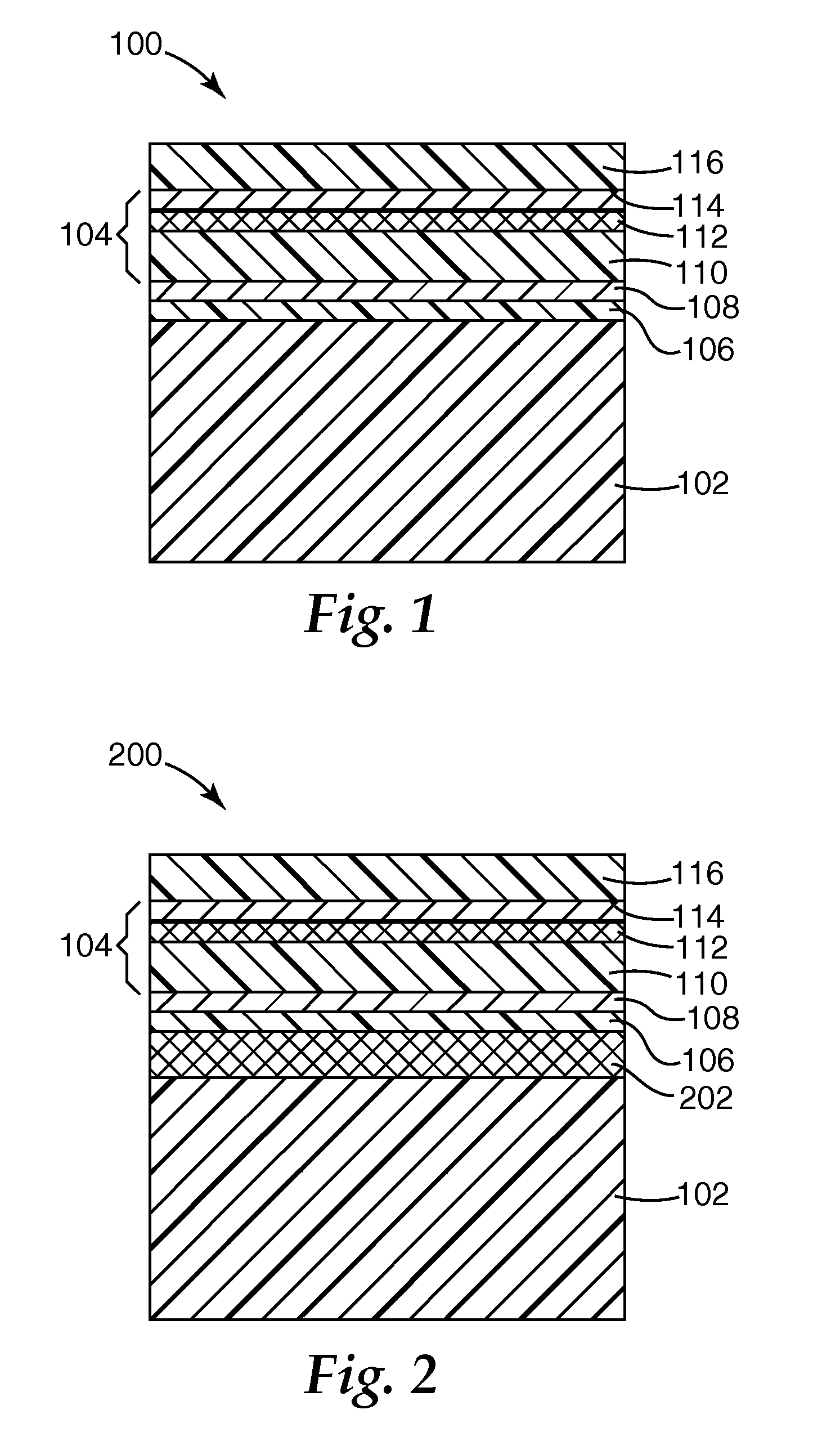Infrared reflecting films for solar control and other uses
a technology of solar control and reflective films, applied in the field of solar control films and glazing, can solve the problems of poor visible transparency, good infrared rejection, and difficult to achieve the desired solar control level
- Summary
- Abstract
- Description
- Claims
- Application Information
AI Technical Summary
Benefits of technology
Problems solved by technology
Method used
Image
Examples
example 1
[0052]A PET support was coated with an optical stack containing zinc oxide nucleating seed layers, silver metal layers and organic layers made using two different acrylate mixtures (Acrylate A or Acrylate B) in an Acrylate A / ZnO / Ag / Acrylate B / ZnO / Ag / Acrylate B stack configuration. Acrylate A contained 64% IRR214 acrylate (UCB Chemicals), 28% n-lauryl acrylate and 8% ethylene glycol bis-thioglycolate. Acrylate B contained 80% phenylthioethyl acrylate and 20% pentaerythritol triacrylate. The individual layers were formed as follows:
[0053](Layer 1) A roll of 0.05 mm thick, 508 mm wide PET film (MELINEX™ 453 from DuPont Teijin Films) was loaded into a roll to roll apparatus like that shown in FIG. 3, located inside a vacuum chamber. The pressure in the chamber was reduced to 3×10−4 torr and the drum 308 was chilled to −18° C. The PET film as supplied by the manufacturer has an unidentified treatment on one side. The untreated side of the PET film was exposed to plasma pretreatment using...
example 2
[0061]Using the general method of Example 1, a multilayer optical film (3M™ Solar Reflecting Film from 3M Co.) was coated with an optical stack containing zinc oxide nucleating oxide seed layers, silver metal layers and organic layers made using an acrylate mixture (Acrylate C) in an Acrylate C / ZnO / Ag / Acrylate C / ZnO / Ag / Acrylate C stack configuration. Acrylate C contained 90% phenylthioethyl acrylate, 5% pentaerythritol triacrylate, and 5% of a 50:50 mixture of difunctional bisphenol A-based epoxy acrylate and ethoxylated trimethylol propane triacrylate. The individual layers were formed as in Example 1 except that the thickness of the Acrylate C base coating was about 120 nm, the thickness of the first and second Ag layers was about 8 nm, the thickness of the Acrylate C spacing layer was about 112 nm, the thickness of the Acrylate C protective layer was about 62 nm and a plasma pretreatment was used between application of the metal layers and the overlying organic layers.
[0062]Both ...
example 3
[0065]Using the general method of Example 1, a PET support was coated with an optical stack containing zinc oxide nucleating oxide seed layers, silver metal layers and organic layers made using an acrylate mixture (Acrylate A) in an Acrylate A / ZnO / Ag / Acrylate A / ZnO / Ag / Acrylate A stack configuration. The individual layers were formed as in Example 1 except that a 32 m / min web speed was employed, the thickness of the Acrylate A base coating was about 120 nm and the thickness of the first and second Ag layers was about 6.5 nm. Both sides of the resulting solar control film were subsequently plasma treated. The film was laminated into the center of a 5 layer automotive sidelight safety glazing construction having a glass / PVB / film / PVB / glass configuration.
PUM
| Property | Measurement | Unit |
|---|---|---|
| Thickness | aaaaa | aaaaa |
| Thickness | aaaaa | aaaaa |
| Thickness | aaaaa | aaaaa |
Abstract
Description
Claims
Application Information
 Login to View More
Login to View More - R&D
- Intellectual Property
- Life Sciences
- Materials
- Tech Scout
- Unparalleled Data Quality
- Higher Quality Content
- 60% Fewer Hallucinations
Browse by: Latest US Patents, China's latest patents, Technical Efficacy Thesaurus, Application Domain, Technology Topic, Popular Technical Reports.
© 2025 PatSnap. All rights reserved.Legal|Privacy policy|Modern Slavery Act Transparency Statement|Sitemap|About US| Contact US: help@patsnap.com



